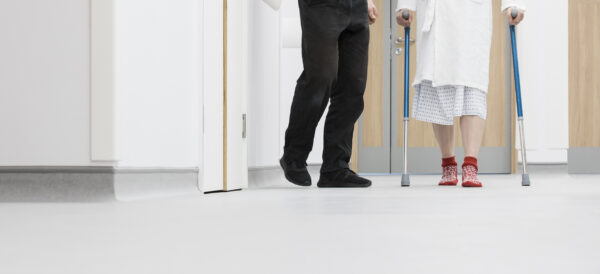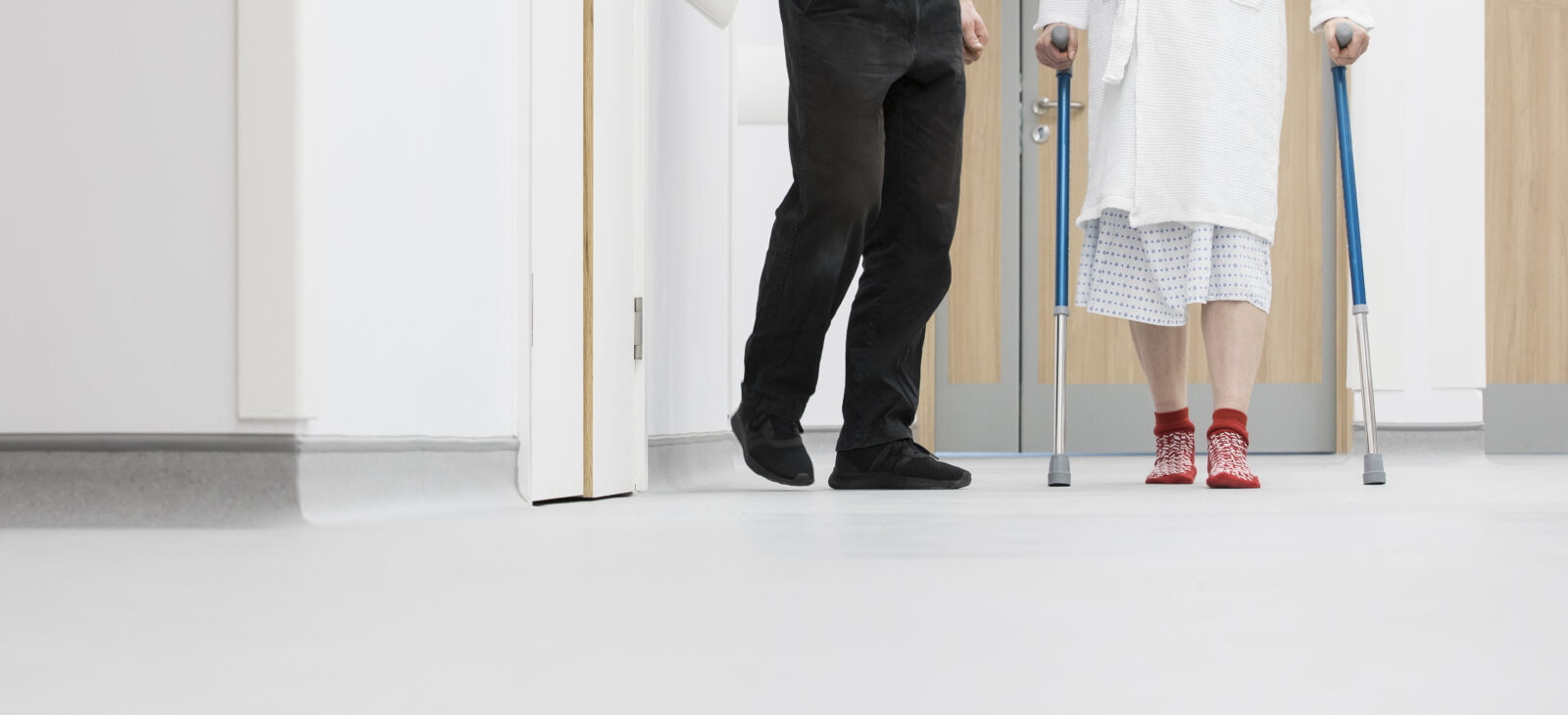Contact number: 020 7806 4060
What is Ankle Replacement Surgery?
Ankle replacement surgery involves removing the damaged ankle joint and replacing it with a prosthetic implant made from metal and plastic components. This restores smooth movement and reduces pain caused by arthritis or joint damage.
Ankle replacement is often recommended for patients with:
- Severe Arthritis: Osteoarthritis, rheumatoid arthritis, or post-traumatic arthritis causing pain and stiffness.
- Joint Damage: Significant wear and tear or injury to the ankle joint.
- Limited Mobility: Pain or instability that interferes with walking and daily activities.
The procedure preserves natural movement in the ankle joint, offering an alternative to ankle fusion for suitable patients.
Ankle Replacement Surgery at St John & St Elizabeth Hospital
At St John & St Elizabeth Hospital, we offer ankle replacement surgery with a personalised approach to care. Our experienced surgeons take the time to understand your needs and guide you through each step of the process to help you regain comfort and mobility.
Why choose us for ankle replacement surgery?
- Specialist Orthopaedic Surgeons: Our consultants are highly experienced in ankle replacement and joint reconstruction procedures.
- Personalised Care: We take the time to understand your condition and goals, offering treatment that aims to improve your quality of life.
- Modern Facilities: Our hospital has advanced imaging and surgical equipment to ensure precise diagnosis and treatment.
- Accessible Location: We are based in NW8 and serve patients from Hampstead (NW3), Kilburn (NW6), and the wider London area.
We are committed to helping you reduce ankle discomfort and improve mobility with expert care and support from consultation to recovery.
Consultants who perform Ankle Replacement Surgery
How to pay for your treatment
If you’re… paying for yourself
Did you know you don’t need private medical insurance to come to St John & St Elizabeth Hospital? As a self-pay patient, you can access safe, outstanding quality health care at times to suit you.
For scans and tests, as well as to see most consultants, you’ll still need to be referred by a medical professional like your GP, but as a self-pay patient, the process is more straightforward. You won’t need authorisation from an insurance provider, and you’ll have greater choice of consultant and appointment times.
If you’re… insured
St John & St Elizabeth Hospital is approved by all major medical insurance companies. If you have a personal private health insurance policy, or your company provide it for you, you can use it to pay for your care from your initial consultation through to treatment, surgery and aftercare such as physiotherapy. Not all private health insurance plans cover the same things. It’s very important to check exactly what you are covered for with your insurance provider.
Frequently Asked Questions About Ankle Replacement Surgery
St John & St Elizabeth Hospital is located in St John’s Wood (NW8), a well-connected area of North West London. We are conveniently accessible for patients from Hampstead (NW3), Kilburn (NW6), and beyond.
By Tube:
- St John’s Wood station (Jubilee Line) is just a 5-minute walk from the hospital.
- Finchley Road (NW3) and Kilburn stations (NW6) on the Jubilee Line provide excellent connections.
By Bus:
- Wellington Road: Routes 13, 46, 82, and 113 stop near St John’s Wood Underground Station, just a short walk from the hospital.
- Circus Road: Routes 46 and 187 stop close to the hospital’s Circus Road entrance.
- Abbey Road: Routes 139 and 189 stop near the junction where Grove End Road becomes Abbey Road, providing easy access.
Major Roads:
If you’re travelling from NW3 or NW6, major routes such as Finchley Road or Kilburn High Road offer a direct approach to the hospital
The procedure typically takes 1.5 to 2.5 hours, depending on the complexity of the joint damage and surgical approach.
Recovery usually takes 6 to 12 weeks, with a gradual return to weight-bearing activities. Physiotherapy is often recommended to help restore strength and mobility in the ankle. Full recovery can take up to 6 months.
Within the first few days after the surgery, it’s critical to keep your leg elevated. During the following weeks, you’ll likely wear a boot and attend physical therapy; this will ensure a healthy blood supply, agility, total ankle replacement recovery, and long-term pain relief. Don’t worry, you’ll be able to wear normal shoes within six weeks of recovery.
After six months, you’ll find your ankle ligaments almost completely recovered.
Some people will recover from a total ankle arthroplasty quicker than others. It’s important not to compare your recovery process – especially not to younger patients, as typically they bounce back a little quicker.
Either way, no one should rush recovery. It’ll take around 12 months before you notice the ankle arthroplasty has gotten the ankle joint back to its full function.
Ankle replacement surgery reduces pain, preserves joint movement, and improves mobility, allowing you to return to everyday activities with greater comfort and stability.
Both procedures have their benefits. Ankle replacement preserves natural joint movement, while ankle fusion eliminates movement to stabilise the joint. Your consultant will recommend the most suitable option based on your condition and lifestyle.
Ankle replacement may not be suitable for patients with severe bone loss, poor bone quality, active infections, or significant deformities. It may also be less appropriate for individuals with high-impact activity demands or certain medical conditions that could affect healing. Your consultant will assess your overall health and condition to determine the best treatment option.
Most patients can start walking with the help of crutches or a walker within a few weeks of ankle replacement surgery. Full weight-bearing usually begins around 6 weeks post-surgery, depending on your healing progress. Your consultant will guide you on when to safely transition back to normal walking.
Medically reviewed by Mr Aria Ghassemi - MBBS MRCS FRCS MSc Dip (Imperial College)


